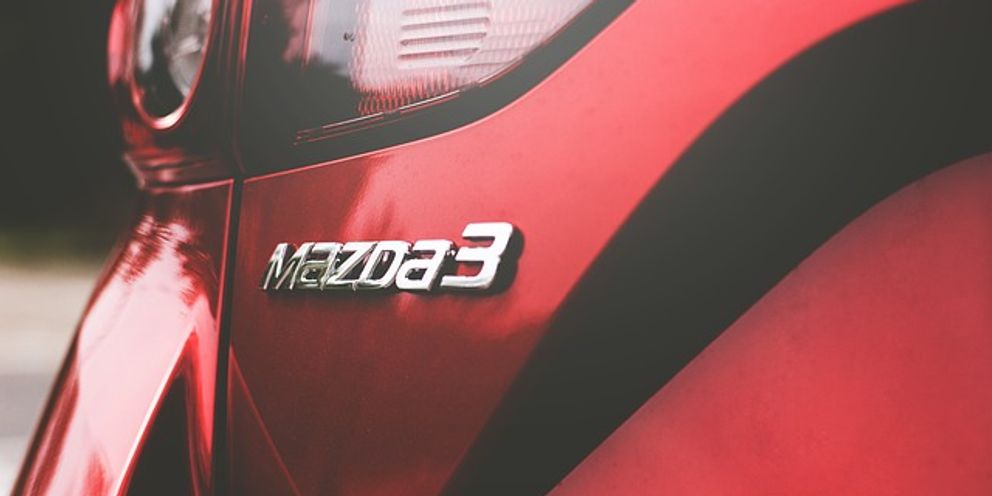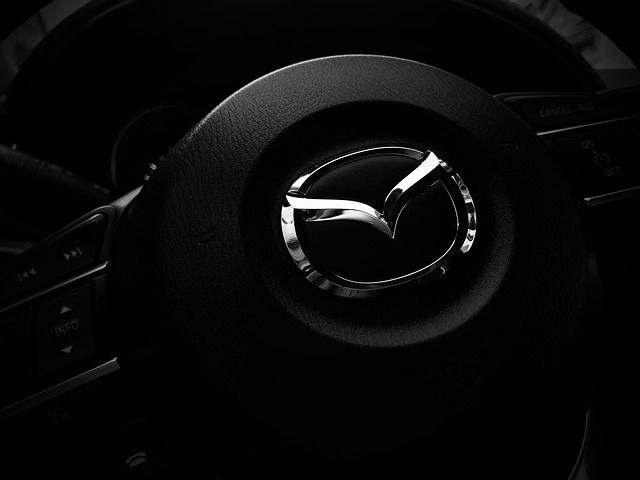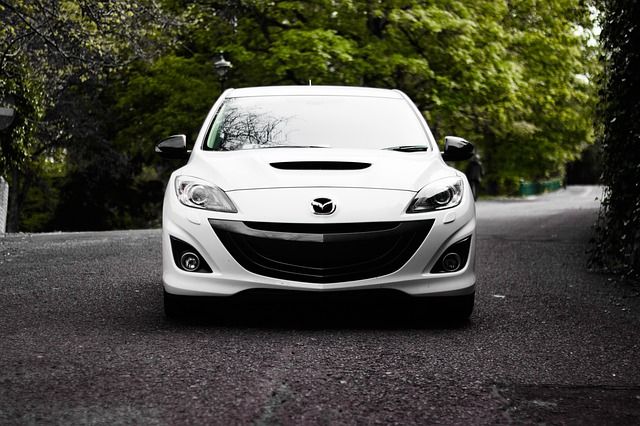
History of Mazda Cars
Image Source: Pixabay
Written by Gregory Miller
Mazda, also referred to as the Mazda Motor Corporation, is a multinational automaker based in Fuchu, Aki District, Hiroshima Prefecture, Japan. Having produced over 1.5 million vehicles in Japan and manufacturing plants around the world for global sale in 2015, Mazda was rated as the fifteenth biggest automaker by production worldwide. Its name was developed when the company produced its first three-wheeled truck. The term "Mazda" is associated with Ahura Mazda, the God of Light. The company hoped the name would brighten the image of the compact vehicles that they produced.
At its inception, Mazda began as Toyo Cork Kogyo Co., LTD. and was founded in Hiroshima, Japan on January 30th, 1920. Seven years later, Toyo Cork Kogyo decided to change its name to Toyo Kogyo Co., Ltd. During this period, the company began to experience financial struggles and was forced to accept the help of several Hiroshima based business leaders to save them from bankruptcy. Toyo Kogyo originally specialized in manufacturing machine tools, but with a new decade came a change in the company’s direction. During 1931, Toyo Kogyo switched from manufacturing machine tools to producing automobiles; releasing the first Mazda-Go Autorickshaw.
During the 1960s, Mazda was inspired by the NSU Ro 80, a four-door, front-engine sedan marketed and manufactured by the West German firm NSU, and poured numerous resources into the development of the Wankel rotary engine. This was done to differentiate the company from the other Japanese auto businesses in the market. During this time the company formed a business alliance with NSU and began to manufacture the limited-production Cosmo Sport in 1967. Today, Mazda continues to manufacture the Pro Mazda Championship line and is the only auto manufacturer that still produces Wankel-type engines for automobiles. NSU, as well as other companies, gave up designing Wankel-type engines back in 1970. Even General Motors tried to use the engine in its prototype Corvette, but the vehicle never made it to production.
As production began to increase, Mazda began exporting vehicles at a breathtaking pace. They began to manufacture both rotary-powered and piston-powered automobiles, soon finding their vehicles being distributed around the world. In 1968, Mazda made its way into Canada with MazdaCanada. Two years later, Mazda moved into the American market with Mazda North American Operations and found great success. Mazda manufactured its own pickup truck, the Mazda Rotary Pickup, which was based on the piston-powered B-series model. This vehicle was solely targeted at buyers in North America. Did you know that Mazda has been recognized as the only auto manufacturer to have ever manufactured a pickup truck with a Wankel engine?

Image Source: Pixabay
Mazda’s rotary engines were quite successful, but the company was set back by the oil crisis that took place in 1973 where members of the Organization of Arab Petroleum Exporting Countries enacted an embargo that targeted all nations that were perceived as having supported Israel during the Yom Kippur War. Affected countries included Japan, Canada, the Netherlands, the UK, and the US. During this time, citizens around the world began to focus on vehicles with better fuel efficiency, causing Mazda’s fuel-guzzling rotary-powered automobiles to lose favor with the public.
With its fall from grace in the US and foreign markets, Mazda was saved by the timely intervention of the business leaders in Japan like the Sumitomo Keiretsu Group also known as Sumitomo Bank. Mazda then focused their energy on manufacturing cars with piston engines and began producing a wide variety of four-cylinder models throughout the 70’s. Mazda renewed its focus and began manufacturing rotary engines for sports vehicles. It started with the lightweight RX-7 in 1978 and continued forward with the more modern RX-8. This change of direction also led to the development of the Mazda Roadster AKA the Mx-5 or Miata, yet another lightweight sports car. The owners of Mazda Miata MX-5 must select high quality, durable miata car cover which will give you the protection that you need. Order online today!
Due to Mazda’s financial troubles in the 1960s, they formed a partnership with Ford Motor Company until 2015. With Ford holding a 7% financial stake in Mazda, both companies began a series of joint projects. The two started cooperating even before their partnership when the Mazda B-Series inspired a Ford Courier variation for the North American market. At the beginning of 1976, Mazda sold their Titan and Bongo cab-over trucks with Ford badging. In the spring of 1980, Mazda began supplying Ford with manual transaxles. Notably, the Mazda Familia platform was utilized in Ford models such as the Escort and the Laser. Later, the Capella architecture made its way into Ford’s Probe and Telstar sports models.
During the 1980s, Ford began to hold a larger financial stake in Mazda of 20%. They gained an additional 5% in 2002. Ford-badged Mazda vehicles began replacing much of Mazda’s original lineup in the Asia-Pacific markets where the Telstar and Laser replaced the European sourced Cortina and Escort After Mazda experienced a closure of its assembly plant in New Zealand, they established a joint venture with Ford New Zealand known as the Vehicle Assemblers of New Zealand (VANZ). In South Africa, Ford’s local subsidiary merged with Sigma Motor Corporation to form the new corporation Samcor. The result didn’t provide terrific results because Ford and Mazda customers weren’t impressed with the sharing of models. In Australia, the 323 and 626 were fully imported. The only vehicles that were assembled locally were the Telstar and Laser. On the Japanese front, The Telstar and Laser were sold side by side with other vehicles that wore the Mazda badge.

Image Source: Pixabay
In North America, Mazda built a new plant in Flat Rock, Michigan where the mainstream 626 sedan and its companion the Mazda MX-6 sports coupe was manufactured. Ford and Mazda continued to help one another as their partnership continued to flourish. An example of their flourishing collaboration can be found in the Mazda 121, a variant of the Ford Fiesta that was built in plants located in South Africa and Europe. Mazda even attempted to sell some of Ford’s vehicles in Japan through its dealer group Autorama.
Furthermore, Mazda helped Ford to develop the 1991 Explorer. Mazda sold the two-door vehicle as the Mazda Navajo. However, the campaign only ran from 1991 to 1994 and was considered to be a failure. One the other hand, the Ford version, which offered both two-door and four-door variants, was wildly successful. In fact, it held the title of the top-selling sport-utility vehicle in the United States for over a decade. Impressed by Ford’s success, Mazda based its B-series trucks on Ford’s Ranger pickup trucks from 1994 until 2010.
Interested in alternative engine technology, Mazda unveiled the first Miller cycle engine ever to be used in an automotive vehicle through the introduction of the Millenia luxury sedan in 1995. Though the Millenia, as well as the Miller cycle engine, were ultimately discontinued in 2002, a resurgence occured in 2008 with the introduction of a smaller version of the Miller-cycle four-cylinder engine for use in its Demio. In regards to Wankel technology, Mazda is the only automaker to utilize Miller-cycle engines in their vehicles. Owners of such an automaker must choose mazda car covers to protect against scratches, dust, environmental damage, UV rays, and other hazards that can cause premature wear.
During the 1990s, Ford increased its stake in the company to 33.4%. In June 1996, Henry Wallace was appointed as president of the company and began to restructure Mazda. He introduced new plans to integrate closer with Ford and launched Mazda’s digital innovation program in a bid to hasten the development of new products. Wallace also took control of overseas distributors, manufacturing facilities and dealerships, which resulted in reduced cost reductions in Mazda’s overall production. Following Wallace, James Miller took over in 1997 and Ford executive Mark Fields was head of the company in 1999.

Image Source: Pixabay
Due to the financial crisis of 2008, Ford revealed that they would be selling 20% of their shares, thus reducing their stake in the Japanese car company to 13.4% and surrendering total control of the company. The following day, Mazda made announced that it would buy back 6.8% of shares for around $185 million USD. The rest would be purchased by various business partners. Furthermore, Takashi Yamanouchi would replaceHisakazuImaki as the chief executive. Ford eventually reduced their stake to only 3% on November 18, 2010, claiming that they wished to explore new emerging markets. After that, it is believed that the Sumitomo Mitsui Financial Group became the largest shareholder. Finally, Ford sold their remaining shares to Mazda in September 2015. Fortunately, both companies have remained strategic partners and continue to engage in joint ventures.
After parting ways with Ford, Mazda suffered its biggest annual loss in 11 years and raised more than 150 billion yen ($1.9 billion USD) in a record-breaking share sale to replenish their depleted capital. A portion of the raised capital was used to build an auto plant in Mexico, which was built in a joint venture with Sumitomo Corporation. Mazda’s most recent endeavors include its partnership with Toyota in May 2015. Mazda supplies Toyota with SkyActiv gasoline and diesel engine technology for Toyota’s exchange of hydrogen fuel cell systems.
Updated